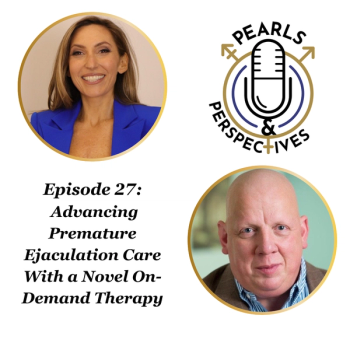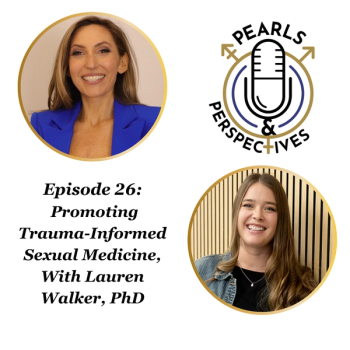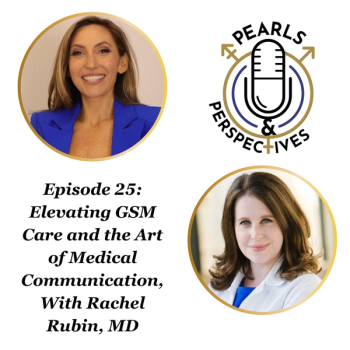
Dr. Ziegelmann on novel injection for patients with Peyronie's disease
"Essentially, we were interested in learning whether there was a change in the amount of curvature with each injection cycle of Xiaflex," says Matthew J. Ziegelmann, MD.
In the previous IMPRESS trials published in 2013,1 the efficacy and safety of collagenase clostridium histolyticum (CCH, Xiaflex) was demonstrated in over 800 patients with Peyronie disease. To get a more detailed understanding of the types of improvements seen in these patients’ penile curvature, Matthew J. Ziegelmann, MD, and a team of investigators conducted a post hoc analysis of the prior CCH trials.2 Ziegelmann is a urologist at the Mayo Clinic, Rochester, Minnesota.
Please discuss the background for this study.
Essentially, we were interested in learning whether there was a change in the amount of curvature with each injection cycle of Xiaflex, which is a collagenase that was FDA-approved in 2013 to treat penile curvature associated with Peyronie disease. The study protocol involves 2 injections every 6 weeks for a total of 8 injections, and the outcomes that were assessed in the original trials, the IMPRESS trials which were published in 2013, showed that the collagenase treatment arm had a significantly greater improvement in their penile curvature vs the control arm. It was around 18° degrees in the treatment arm. What we didn't know till this study and some other recent clinical studies was whether there was a specific amount of change that patients could expect with each treatment cycle. So, the goal of this study was to look at that original phase 3 trial data from 2013 and see if we could identify how much change in curvature patients were achieving with each of those 2 injections, each of the 4 injection cycles. We took that data and broke it down to tease out in a little bit more granular detail what types of improvements we were seeing.
What were some of the notable findings of the study? Were any of them surprising to you or your co-authors?
I think the most important thing that we found is that patients did continue to have improvements in their penile curvature with each subsequent injection series. So, most patients didn't achieve all their curvature right away with the first injection, and that would suggest that continuing with the full course makes sense. One of the interesting things was we looked at—and we used this treatment criteria where we took whatever your curvature was and if you had a 20% decrease, we called you a treatment responder—was if you did not have a treatment response, or you were not categorized as a treatment responder by the end of the second series, so halfway through, what was the likelihood that you would go on to achieve curvature improvement with the next 2 cycles? And also, if you had a response after the first 2 series, the question is, should you stop? Is that good enough? Or are you going to see ongoing improvements?
Let’s talk about the patients who had a treatment response after the first 2 series. Of those, 40% went on to have an additional curvature improvement of at least another 20%. They had 20% or greater after the first 2 series, and then they went on to have another 20% or greater improvement with the second 2 series. Of the patients who did not respond or did not meet those criteria for treatment response after the first 2 series, about 30% of them in the treatment arm went on to have a response with the second 2 series. Now, what's interesting is that I was part of a study that was recently published, looking at that similar question but in a group of patients that were treated after the FDA trial. This was just a clinical group, so we didn't have a comparison group. It wasn't a randomized control trial. It was real-world clinical data, and there are differences in how the medication is administered and whether specific adjunctive therapies like penile traction were used. What we found is that if you didn't respond as robustly to the first 2 series, you had about a 70% likelihood that you would respond with the second 2 series. So, there's a little bit of disparate findings between the original IMPRESS phase 3 trial data that I looked at in this study and the study that we recently published, but I think both of those would suggest that if patients are motivated to see if they can continue to improve their curvature and avoid things like surgery—which for many patients, is a goal—continuing with the collagenase makes good sense.
How does this research build on previous studies of CCH?
I think the most important thing it builds on is that it's a more detailed look at the original phase 3 data, which really was extremely important. That was a landmark trial. There were 2 simultaneous randomized-controlled, double-blind, placebo-controlled trials that were published in 2013, and those are what gained this medication FDA approval. And it is the only FDA-approved nonsurgical treatment for Peyronie disease at this point. So, that data showed that patients who had the treatment with the collagenase vs the placebo had a significantly greater reduction in their penile curvature. The average was about 34% reduction, or 18° roughly, in the treatment arm.
This data builds on that by showing that patients who may not respond as robustly early on have reasonable likelihood of achieving success by completing the full series. On the flip side, if you had a good response early on, it supports that there's good reason to continue completing the full 4 series. I think that's important. And then it's more information with which we can counsel patients at the start, and when we take our pauses as we're going through the cycle. We have the 6-week gaps between treatment cycles, which are part of the protocol, and when we see that patient back and we're sitting and having a discussion and saying, "What do you think? Do you feel like this is giving you benefit?" we can have real-world data, not only from institutions like ours that are assessing these outcomes after the trials are performed, but we can say, "Hey, with your original trials, which are the most rigorous way that research is done, this is what the results showed." So, I think it's important for us to be able to counsel our patients with that data.
Based on this data, are you likely to alter your own approach to CCH in patients with Peyronie disease? Why or why not?
Actually, I would say that this reinforces what I already do in my own practice, which is take opportunities during the therapy to—I don't want to say "pause," because it's not like we're stopping the therapy—sit with the patient, assess where we've been, where we are now, and where we could go based on the data. Having the study data we have here, having the clinical data that's been published, just gives us more power to be able to effectively counsel our patients. I would not say that this study will change my practice. It just gives me more confidence that the way we're practicing is the right way to go.
What is the take-home message for the practicing urologist?
I think the take-home message is that for men who are interested in a nonsurgical treatment for Peyronie' disease, collagenase remains a very important treatment option. And that patients who want to know whether they need to complete the full cycle sometimes need this data and need this information to help them in that decision-making process, and this study provides that. So, I think the take-home message is that it's very reasonable to continue this therapy because many patients will have ongoing benefits with each subsequent injection cycle. Completing those 4 injection cycles is likely to yield the best clinical outcomes for most of our patients.
Is there anything else you feel our audience should know about the findings?
I'd just emphasize that this study was supported by Endo Pharmaceuticals who are the manufacturers of this drug. They essentially supported the original phase 3 trials, which is what companies do when they're trying to bring a new product to the marketplace. This is just reassessment of that data. So, I think that's important for people to know anytime they're interpreting a study—to know who was involved. I don't have any disclosures or any personal financial relationship with a company like Endo Pharmaceuticals, but I do enjoy the opportunity to be able to partner with our colleagues, to be able to do research like this, which I think is very meaningful. In general, I think having that conversation with patients who have Peyronie disease about all forms of treatment is extremely important. And if a provider does not feel comfortable or confident in having that discussion, they should feel empowered to refer to someone with expertise in this area.
References
1. Gelbard M, Goldstein I, Hellstrom WJG, et al. Clinical efficacy, safety and tolerability of collagenase clostridium histolyticum for the treatment of Peyronie disease in 2 large double-blind, randomized, placebo controlled phase 3 studies. Published online January 31, 2013. J Urol. doi:10.1016/j.juro.2013.01.087
2. Ziegelmann M, Liu G, McLane M, et al. Collagenase clostridium histolyticum treatment for Peyronie’s disease: analysis of outcomes and cumulative benefits after each injection cycle. Paper presented at: 2021 Sexual Medicine Society of North America Fall Scientific Meeting; October 21-24, 2021; Scottsdale, Arizona. Abstract #059
Newsletter
Stay current with the latest urology news and practice-changing insights — sign up now for the essential updates every urologist needs.


















